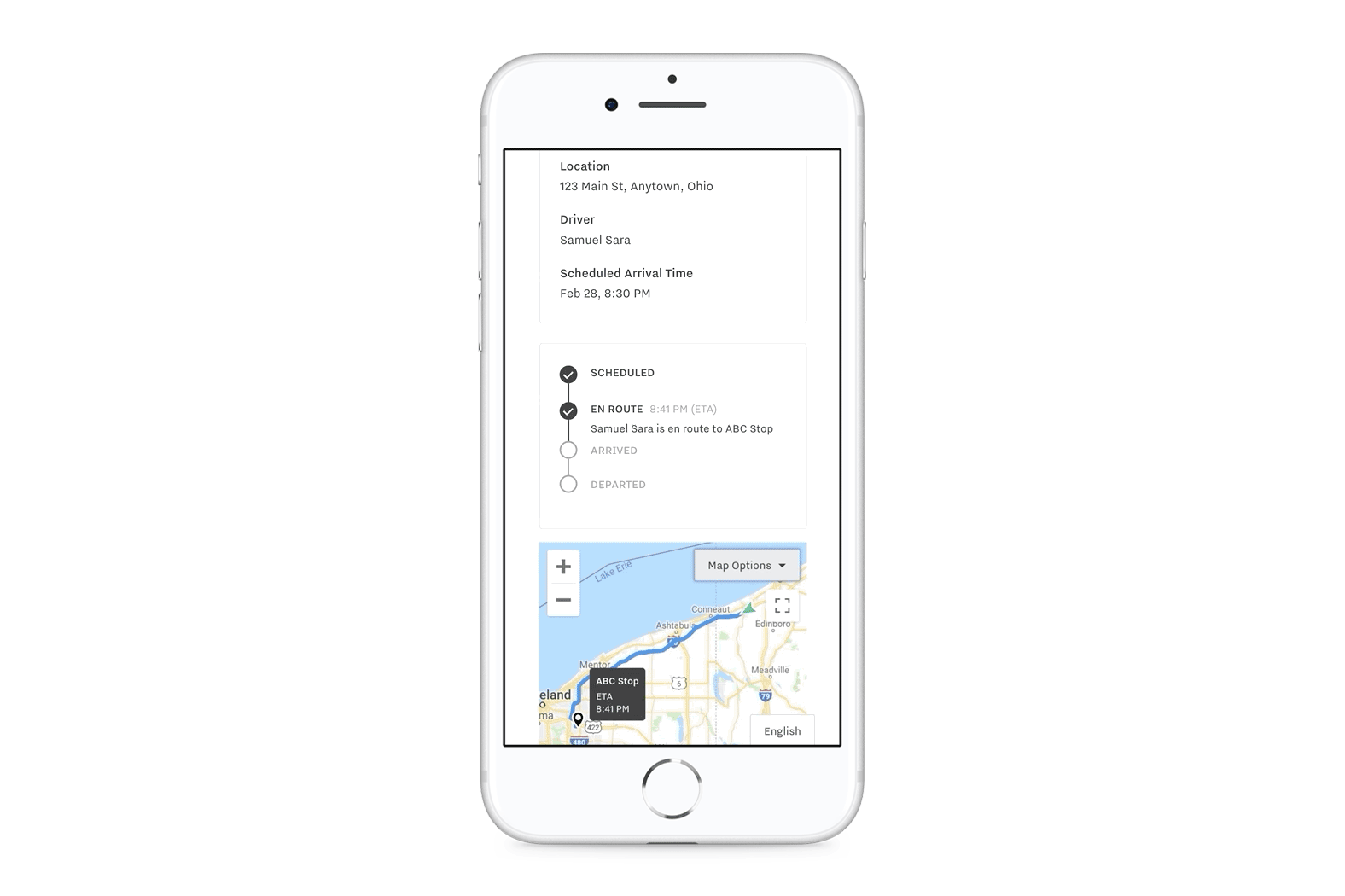Safety
3 Ways Food and Beverage Fleets Can Increase Efficiency During the COVID-19 Outbreak
April 1, 2020

Get the latest from Samsara
Subscribe nowThe US Department of Homeland Security has designated food supply as one of the essential services during the COVID-19 pandemic, communicating the need to keep workers who operate in this sector on the job.
But as restaurants shutter their doors and grocery chains become the leading source of sustenance for people around the globe, there’s been an unprecedented strain on the businesses that support their operations. While grocers set earlier closing times to restock barren shelves, truck drivers must meet extraordinary demand.
According to the Wall Street Journal, trucking shipments to grocery stores were 50% higher last week than the same time the previous year.
If you’re managing a food and beverage fleet, chances are the COVID-19 outbreak has created unique circumstances or dependencies for your drivers. To help you navigate these trying times, we’ve detailed three ways your fleet can leverage Samsara technology to make sure your trucks are running as efficiently as possible in this changing landscape.
1. Ensure smooth deliveries by proactively communicating arrival times
The ongoing COVID-19 crisis has upended the modern workplace with changes to operating hours across multiple industries. These changes—caused by unanticipated customer surges and reduced staff sizes—have had a ripple effect on workers in all types of sectors. For food and beverage fleets, this means warehouses or other drop-off points along a route may be running on an atypical schedule.
To accommodate these varying schedules while staying sensitive to the fact that some grocer docks are busier than ever, it’s critical to be extra vigilant with your customer communication. This means ensuring drop-off locations are ready to receive your drivers and your customers are up-to-date on your arrival time.
To do this, consider using Samsara Live Sharing links to communicate your ETA in real time. Live Sharing links let you share the real-time GPS location of any vehicle directly with your customers, eliminating the need for back-and-forth between dispatch, drivers, and customers. With these links, your customers can track your vehicles on their smartphones and know exactly when to expect your driver to arrive.

Additionally, Live Sharing links will automatically alert your customer when your driver is approaching. This can provide your customers with time to prepare facilities so they are ready to receive your driver and their delivery as soon as they arrive, helping your customers and your fleet stay on schedule and reduce detention time. This insight can enable your customers to better communicate when goods will be in stock at grocery stores—information that can be relayed to shoppers to improve customer service and reduce multiple grocery runs that impact social distancing measures.
2. Digitize processes to stay on-time and empower remote workers
Executing a seamless food delivery often means managing a lot of paperwork including customer orders, route sheets, delivery receipts, invoices, and more. Once a delivery is complete, these paper documents need to make their way back to your administrative staff—which might take a week or more under normal circumstances. But now, with some staff working remotely and others inundated with keeping your fleet running smoothly, paper documents can cause unnecessary delays to your operations. Though these slow-downs can be challenging for any fleet, they can be especially crippling to a food and beverage fleet working under the pressures of unprecedented demand.
To help your drivers maintain timely deliveries and enable remote work to be completed efficiently, consider digitizing processes across your fleet. With Samsara, drivers can capture electronic proof of delivery using just the camera on their smartphone or tablet. This makes it simple to take photos of delivery receipts, receive electronic signatures, add notes about delivered goods, and automatically submit everything to the Samsara dashboard so back-office staff has instant access from anywhere.
Not only can digital documents help your drivers maintain efficient deliveries, but they can speed up back-office processes as well. By retaining digital records of every delivery, Samsara helps your team reduce the administrative overhead associated with manually scanning, sorting, and filing delivery paperwork. Plus, digital proof of deliveries can allow you to bill customers more easily so your business can get paid faster.
3. Implement sanitary best practices for safe deliveries
As COVID-19 cases increase, some receivers are hesitant to let drivers enter their facilities due to a lack of information about the truck’s sanitation practices. Though these new conditions can be challenging to navigate, it’s especially important for trucks delivering items as essential as food to be able to confidently prove that proper sanitation steps were taken.
Luckily, food and beverage fleets can use Samsara to help streamline their sanitation practices and efficiently communicate them out to customers and the rest of their fleet. This ensures that customers are looped-in with the right information, deliveries are kept on schedule, and drivers stay protected.
Fleets can ensure new sanitization practices are being followed by customizing electronic DVIRs so that pre- and post-trip inspections include specific cleaning procedures. To do this, simply identify sanitation needs or share sanitation details in Samsara’s new "Needs Sanitization" tag in the DVIR dashboard. This can help your fleet document sanitation needs while also creating a way to address customer concerns about the cleanliness of incoming vehicles. To learn more about the best ways to clean and sanitize truck cabs during the COVID-19 pandemic, review the TMC’s updated In-Cab Cleaning and Deodorizing Guidelines.
Samsara is here to support you
We value everything our customers are doing to protect our communities at this time and will continue to offer our support by closely monitoring public health regulations, listening to feedback from our users, and communicating helpful information. If you have any questions, please don’t hesitate to reach out to our support team—we are here to help.
Get the latest from Samsara
Subscribe now

















